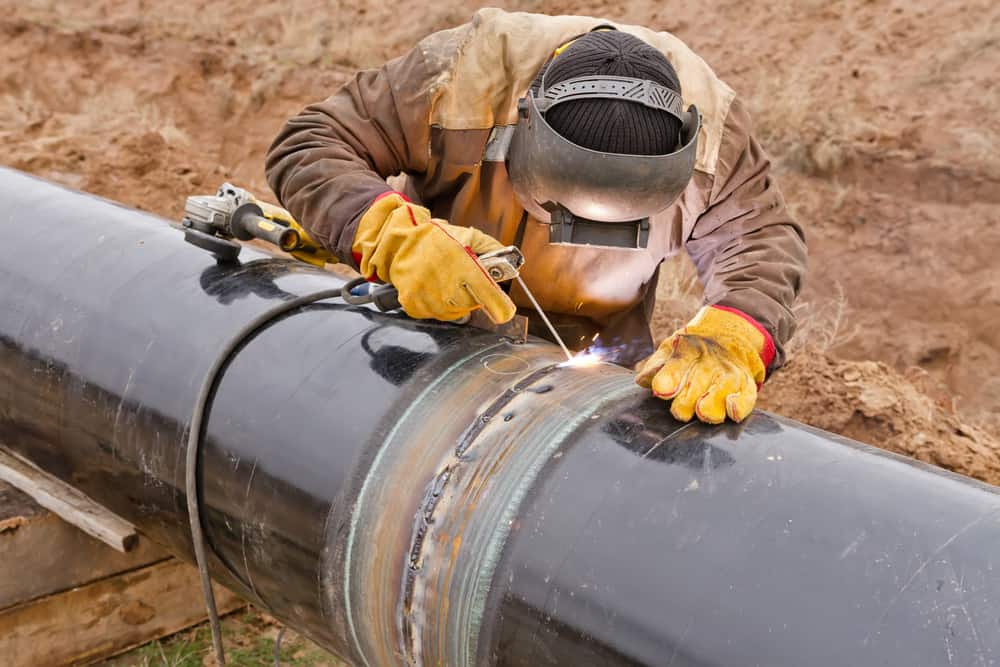Comprehensive Introduction of Pipe Welding Evaluation Treatments
In the world of pipeline building and construction, guaranteeing the honesty and safety and security of welded joints is vital. Pipe welding evaluation procedures play a crucial function in guaranteeing that welded links fulfill rigorous sector standards and requirements. From meticulous pre-welding assessments to extensive post-weld assessments, a well-defined inspection process is crucial for preserving the architectural strength of pipelines. Comprehending the ins and outs of welding assessment treatments is not only a governing demand yet likewise a basic facet of maintaining the reliability of these essential frameworks.
Pre-welding Inspection Preparations
Prior to starting the welding process, detailed pre-welding inspection prep work are vital to make certain the stability and high quality of the weld joint. These preparations entail a careful assessment of the products to be welded, the welding tools, and the workplace. To start with, the materials should be checked for any kind of defects, contaminants, or variances that can endanger the weld. This includes monitoring for appropriate product qualities, dimensions, and surface conditions. Pipeline Welding Inspection. Additionally, the welding devices needs to be inspected to validate that it is in good working condition, adjusted properly, and suitable for the specific welding procedure. Any type of issues with the equipment ought to be addressed promptly to avoid issues in the weld. Finally, the job environment must be examined for cleanliness, correct ventilation, and safety procedures to make sure a helpful setting for the welding procedure. By performing extensive pre-welding assessment prep work, prospective problems can be determined and settled early, leading to high-grade and reliable weld joints.
Welding Procedure Credentials
Thorough pre-welding inspection preparations lay the structure for the important procedure of Welding Procedure Qualification, ensuring the integrity and quality of the weld joint. Welding Treatment Qualification (WPQ) is a crucial step in the welding procedure that involves screening and licensing welding procedures to assure they satisfy details standards and requirements. The WPQ process generally includes welding treatment spec advancement, welding treatment certification screening, and documentation of the outcomes.
Throughout welding treatment requirements growth, crucial information such as the welding process, welding materials, joint design, and welding parameters are specified to produce a detailed treatment. Consequently, welding treatment qualification testing is carried out to verify the suggested treatment's stability. This testing commonly involves welding test promo codes that undergo different mechanical and non-destructive examinations to assess the weld's high quality and adherence to the specified standards.
In-process Weld Evaluation
Throughout the welding process, in-process weld evaluation plays a crucial role in making certain the top quality and stability of the weld joint - Pipeline Welding Inspection. This kind of assessment entails keeping an eye on the welding criteria, examining the weld grain development, and discovering any prospective defects or gaps as they occur. By carrying out in-process weld examinations, welding drivers can immediately deal with any issues that may emerge, therefore making certain and stopping further problems that the last weld fulfills the called for specs
Common methods utilized for in-process weld examination include aesthetic assessment, fluid penetrant screening, magnetic fragment screening, ultrasonic testing, and radiographic screening. Overall, in-process weld evaluation is important for preserving the high quality and reliability of bonded pipes.
Non-destructive Screening (NDT)
Non-destructive Testing (NDT) is top article a crucial method utilized in pipe welding evaluation to evaluate the integrity of weld joints without triggering damage to the welded structure. By utilizing numerous NDT methods, assessors can evaluate the top quality of welds and determine any kind of defects or gaps that may compromise the architectural sturdiness of the pipe. Typical NDT techniques utilized in pipe welding examination consist of Radiographic Screening (RT), Ultrasonic Screening (UT), Magnetic Particle Testing (MPT), Fluid Penetrant Screening (LPT), and Visual Testing (VT)
RT involves the usage of X-rays or gamma rays to create photos of the internal structure of the weld, allowing examiners to detect flaws such as porosity, splits, or incomplete fusion. UT utilizes high-frequency acoustic waves to spot imperfections underneath the surface of the weld, using thorough details about the dimension and area of problems. MPT and LPT are made use of to identify surface-breaking defects by applying magnetic fragments or penetrant fluids to the weld location. Additionally, VT includes visual assessment of welds to determine any kind of noticeable imperfections.
Post-weld Assessment and Documents


Documentation of post-weld assessment findings is necessary for preserving quality assurance documents and making certain compliance with sector criteria and regulations. In-depth reports need to consist of info about the examination techniques used, the location and nature of any defects found, and any corrective actions taken - Pipeline Welding Inspection. Proper paperwork not just functions as a document of the weld's top quality but also aids in future upkeep and assessment processes
Conclusion

To conclude, pipeline welding inspection treatments play a vital role in ensuring the quality and integrity of welds. From pre-welding assessments to post-weld documentation, each step is necessary in keeping the security and effectiveness of pipelines. By adhering to recognized procedures and conducting detailed evaluations, potential flaws can be identified and resolved before they cause costly repair work or failings. Overall, adherence to correct examination methods is vital my site to the success of pipe welding jobs.
From thorough pre-welding assessments to thorough post-weld assessments, a distinct inspection procedure is necessary for preserving the architectural soundness of pipelines. By carrying out in-process weld assessments, welding operators can immediately attend to any type of issues that may arise, thus avoiding more problems and guaranteeing that the final weld meets the required specs.
Typical approaches used for in-process weld assessment include visual inspection, fluid penetrant screening, magnetic fragment screening, my explanation ultrasonic screening, and radiographic screening.Non-destructive Screening (NDT) is an important technique used in pipeline welding examination to analyze the integrity of weld joints without causing damages to the bonded structure. Post-weld evaluation involves different approaches to assess the welds for defects, consisting of aesthetic evaluation, color penetrant testing, magnetic fragment testing, ultrasonic screening, and radiographic screening.